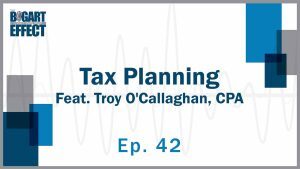Federal income taxes come up in every election cycle, whether it’s a debate about tax rates and brackets or the complexity of the filings. While debates over taxes might seem about as American as apple pie at this point, income taxes aren’t. In this article, we’ll break down when and how the United States came to rely on income taxes as a major source of government revenue.
In the Beginning…
The United States was founded, in part, on the premise that colonists didn’t want to pay taxes without representation, which led to the famous tossing of tea into the Boston Harbor and the American Revolution.
However, not long after the colonies gained their freedom from England, Congress passed the Stamp Act of 1797, which essentially was our nation’s first estate tax. Otherwise, from the early 1790s to 1802, the U.S. government was supported by taxes on such items as spirits (alcohol, not the ghostly kind), sugar, tobacco, and corporate bonds.
Wars played a big part in the history of taxation in this country. To fund the War of 1812, Congress taxed sales of gold, silverware, jewelry, and watches. In 1817, tariffs on imported goods provided the main source of revenue to run the government.
With the onset of the Civil War, Congress enacted the nation’s first income tax law, the Revenue Act of 1861, which included a flat tax of 3% on annual incomes exceeding $800 to help pay for the costs of the war.
That tax law was repealed and replaced by the Revenue Act of 1862, which established the Office of the Commissioner of Internal Revenue (forerunner to the Internal Revenue Service (IRS)), levied excise taxes on most goods and services, and replaced the flat tax with a progressive tax.
The 16th Amendment
However, it was not until 1913 with the adoption of the 16th Amendment to the Constitution, that the income tax became a permanent fixture in the American tax system. Congress now had the authority to tax the income of both individuals and corporations.
It didn’t take the IRS long to start inundating us with forms, beginning in 1914 with the introduction of the first income tax form, the dreaded Form 1040. Enactment of the Revenue Act of 1916 introduced tax rates and income scales.
Tax Rates
Here’s a sobering fact—In 1913, the top federal income tax bracket was 7% on all income over $500,000, and the lowest tax bracket was 1%.
During the Great Depression, Congress raised the highest tax bracket to 63%. Wars can be expensive, as evidenced by the jump in the highest tax rate to 94% during World War II.
In 2018, the highest income tax rate was lowered to 37%.
Trying to Get It Right
Over the years, there have been frequent attempts to reform the tax law in some manner. We’ve seen the adoption of the alternative minimum tax, Social Security tax, taxes on cigarettes and alcohol, gasoline taxes, aviation taxes, property taxes, telecommunication taxes, not to mention state and local taxes.
To quote Will Rogers, “The difference between death and taxes is death doesn’t get worse every time Congress meets.”
Tax laws are always changing and will likely remain a political hot potato. Only time will tell what changes are ahead, but there is no doubt that through taxation, what the government giveth, it inevitably taketh back again.
This article is not intended to be a substitute for specific individualized tax advice. We recommend discussing the tax changes with your financial and qualified tax professionals about how they may affect you. This article does not explain all of the changes introduced by tax reform nor is the information provided intended to be tax advice. You can find additional information about tax law changes on the IRS website. For Tax Season: Bogart Wealth is neither a law firm nor a certified public accounting firm and no portion of the commentary content should be construed as legal or accounting advice. A copy of the Bogart Wealth’s current written disclosure Brochure discussing our advisory services and fees continues to remain available upon request.
Please remember that due to various factors, including changing market conditions and/or applicable laws, the content may no longer be reflective of current opinions or positions. Moreover, you should not assume that any discussion or information contained in this commentary serves as the receipt of, or as a substitute for, personalized investment advice from Bogart Wealth. Bogart Wealth is neither a law firm nor a certified public accounting firm and no portion of the commentary content should be construed as legal or accounting advice. A copy of the Bogart Wealth’s current written disclosure Brochure discussing our advisory services and fees continues to remain available upon request. The content is derived from sources believed to be accurate. Neither the information presented nor any opinion expressed constitutes a solicitation for the purchase or sale of any security. This material was prepared by Broadridge Investor Communication Solutions, Inc.



